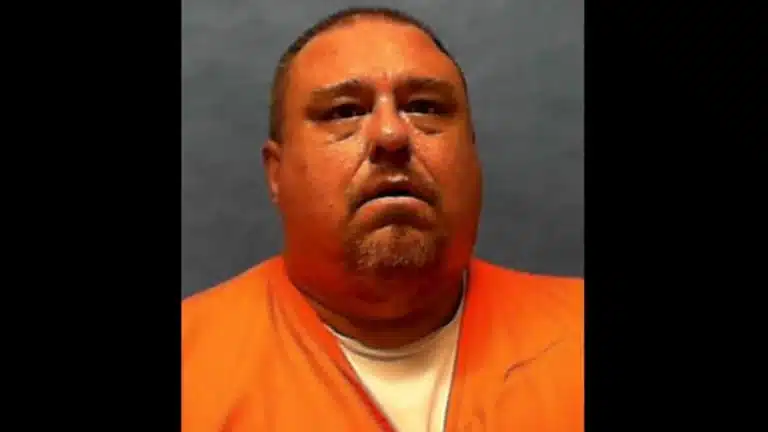
Arthur Bomar Murders Aimee Willard In Pennsylvania
Arthur Bomar was sentenced to death by the State of Pennsylvania for the murder of Aimee Willard
According to court documents Arthur Bomar was released from prison after serving time for murder and would violate his parole countless times however he was allowed to remain free
Arthur Bomar would kidnap, sexually assault and then beat Aimee Willard to death with a tire iron. The case would go cold until Bomar was finally arrested
Arthur Bomar would be convicted and sentenced to death
Arthur Bomar Photos

Arthur Bomar FAQ
Where Is Arthur Bomar Now
Arthur Bomar is incarcerated at SCI Phoenix
Arthur Bomar Case
The evidence presented at trial established the following: At approximately 10:30 p.m. on the evening of June 19, 1996, the victim, 22-year-old Aimee Willard, met several of her high school friends at a bar located on Lancaster Avenue in Wayne, Pennsylvania. Later that night, at approximately 1:25 a.m., Ms. Willard left the bar alone. She would not make it home.
At approximately 2:00 a.m., on June 20, 1996, the victim’s car, a blue Honda Civic, was discovered on the southbound off-ramp of the Springfield-Lima Exit of Interstate 476 in Delaware County. The car’s engine was still running, the driver’s side door was open, the radio was playing and the interior lights and headlights were on. There was a rough abrasion on the back bumper of the victim’s car. There was a pool of blood on the ground in front of the vehicle with drops of blood leading away from it. A tire iron was located near the pool of blood. Later that morning, police discovered a pair of sneakers and a pair of female underpants with a sanitary pad near the abandoned car. The sneakers were later identified as belonging to the victim and the underpants were later identified as the size worn by the victim. Hairs found on the sanitary pad were consistent with the pubic hairs of the victim. The police also obtained tire impressions from the scene.
At approximately 5:00 p.m., on June 20, 1996, Aimee Willard’s body was found naked, positioned face down, with two plastic bags covering her head, in a vacant lot at 16th Street and Indiana Avenue in Philadelphia. The victim’s injuries included multiple blunt force injuries to her head, brain and face; an abraded contusion on her left shoulder and upper chest; a rectangular shaped contusion beneath her left breast; a patterned, angular thermal injury resembling a flower petal on her right lower chest and upper abdomen; numerous fractures in her neck; bruises on her left and right thighs; and defensive wounds on her left and right forearms. There was intact degenerate sperm found in the victim’s vaginal cavity. In addition, a tree branch had been forced into her vagina. There was no blood surrounding or beneath the body or leading up to or away from the body, indicating that the victim was not killed at the site but rather had been killed elsewhere and then moved to this location.
Several hours after the discovery of Aimee Willard’s body, at approximately 11:25 p.m., on June 20, 1996, appellant was coincidentally stopped by the police at the intersection of 20th Street and Erie Avenue in Philadelphia, eight blocks from where the victim’s body had been found. Appellant was driving a green 1993 Ford Escort. The police did not arrest appellant at that time.
Nearly a year later, on June 5, 1997, Arthur Bomar was arrested in Ardmore, Pennsylvania, on an outstanding warrant for violating his parole from a conviction for second degree murder that occurred in Las Vegas, Nevada, and for an unrelated criminal trespass. That evening, investigators from the Delaware County Criminal Investigation Division (CID) questioned appellant concerning the Willard murder. Arthur Bomar told the investigators, among other things, that he drove a 1993 Ford Escort until March of 1997, that he had been to the same bar that the victim had been to on the night of June 19, 1996, previously with a former girlfriend, and that he routinely traveled on Interstate 476.
On July 10, 1997, two Pennsylvania State Police troopers met with appellant’s then-girlfriend, Mary Rumer. Rumer told the troopers that appellant had confessed to her that he murdered Aimee Willard. She told police that appellant related the following events to her: Appellant observed Aimee leave the bar, get into her car, and begin to drive away. He followed in his own car. Arthur Bomar stopped Aimee’s car on Interstate 476 and flashed a fake police badge. When Aimee asked why she was being stopped, appellant told her that she was swerving on the road. Aimee then became angry, at which point appellant punched her, knocking her unconscious. After placing the victim in his car, appellant drove to an abandoned building. Arthur Bomar took the victim’s clothes, placed them in a trash bag and threw them away. Appellant hit the victim’s head with a hard object and killed her. He also admitted raping the victim to Rumer.
Rumer also told the troopers that Arthur Bomar had shown her the location on Interstate 476 where Aimee Willard’s car was abandoned as well as the vacant lot where her body was recovered.
On July 11, 1997, the police conducted a search of appellant’s 1993 Ford Escort pursuant to a search warrant. The police seized and removed the following articles: the left front tire of the vehicle, a Firestone FR440 P17570R13; the oil pan from the undercarriage of the vehicle; and the right front door panel, which contained several brownish spots that later tested positive for blood. The tire taken from appellant’s car was consistent in tread design, size, and wear pattern with the tire impressions taken from the area where the victim’s car was found abandoned. The repeating cross-rectangle shape features, the vertical lines, and the machined edge present on the oil pan taken from appellant’s vehicle matched the pattern injury on the right side of the victim’s body. Most significantly, deoxyribonucleic acid (“DNA”) testing of the bloodstains on the door panel indicated that Aimee Willard was a contributor to the stains.
On July 13, 1997, the police executed a search warrant for samples of appellant’s blood. DNA testing of the blood samples established that appellant’s DNA profile matched the DNA profile of the male fraction developed from vaginal swabs taken from Aimee Willard. There was but a one in 500 million chance that someone other than appellant was the source of the genetic material taken from the victim.
Also in July of 1997, David O’Donald, appellant’s ex-brother-in-law, who was incarcerated in a federal prison for unrelated offenses, met with law enforcement officials to offer his assistance in the ongoing investigation of appellant’s involvement in the Willard murder. Pursuant to those discussions, O’Donald was transferred to the Montgomery County Correctional Facility where appellant was being held. O’Donald was placed on the same cellblock as appellant for approximately two weeks in July. On July 17, 1997, while appellant was in O’Donald’s cell, appellant told him, “if I had disposed of the body, there would be no problem,” and “no body, no Grand Jury indictment.” In addition, appellant stated that, “if everyone does what I tell them, I’ll be alright.” Later that day, while O’Donald was in appellant’s cell, appellant stated, “I grabbed the bitch and she said please don’t do this.” He told O’Donald that he then said to the victim, “I’ll do whatever the fuck I want, just shut up,” to which she replied, “just don’t kill me, I’ll do anything.” Appellant told O’Donald that at that point, “we did whatever we wanted with her, she did whatever we told, and when we were done, I almost took her head off, and we crammed a tree branch up her c#nt.”
The foregoing physical, confessional, scientific and circumstantial evidence overwhelmingly supports the jury’s finding that Aimee Willard was unlawfully killed, that appellant is the person who committed this slaying, that he acted with specific intent to kill, and that the killing was done with premeditation and deliberation.
https://caselaw.findlaw.com/court/pa-supreme-court/1426072.html


